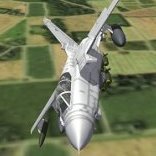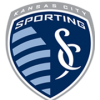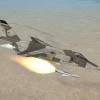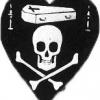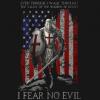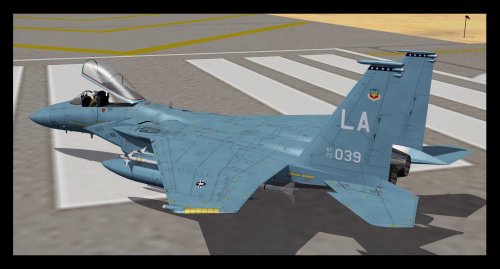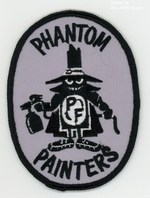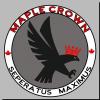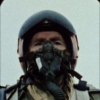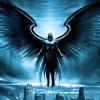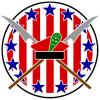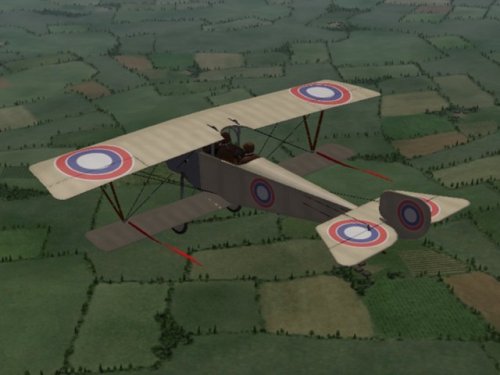Leaderboard
Popular Content
Showing most liked content on 02/18/2018 in all areas
-
8 points
-
5 pointsYup, max up to 7 ALARMS on official RAF site. (And it's 3 on centerlines, 2 on inner tank pylons and 2 instead of tanks). So in practice, with tanks and without AIM-9 ... 5 ;-) So, what I did ... it's possible to load ALARMS on every pylon I saw on pics, but ... in loadouts I used them only 3 on centerlines for SEAD missions. You can add them for load, but they are not auto-loaded. Compromises ... ;-) ==================================== BTW, right navigator screen in bombing mode. Yup we'll have bombing radar. Not hi-precision device, but should be enought for dropping nukes, or 8 bombs salvo ;-)
-
4 points
-
4 points
-
3 pointsHellcats box art (from GiantBomb) Have you ever had the bug to play an old sim? Say, European Air War or Jane's Longbow. What about Hellcats Over the Pacific, or A-10! Attack? Wait… you may be saying, I've never even heard of these sims! I understand if you haven't, as these sims were released only for MacOS, an operating system most hardcore sim pilots have never even considered. In the 1990's, however, there was a very large, and rather unique simulation community built around the Macintosh. While many PC sims such as A-10 Tank Killer and Armored Fist were only starting to scratch the surface of "True 3D", with voxel graphics rendering low resolution textures, Mac developers knew they would have to take some risks to achieve the greatness that was already on full display on the DOS/Windows shelves of CompUSA and ElekTek. Their solution? A typical Mac developer response. They would sacrifice the then high resolution, "photo-realistic" textures for flat shaded polygons to create fully realized 3D worlds and models, including real-time shadows and highly accurate physics. From Wikipedia: "Hellcats was a major release for the Mac platform, one of the first 3D games to be able to drive a 640 x 480 x 8-bit display at reasonable frame rates in an era when the PC clone's VGA at 320 x 240 x 4-bit was the standard." Having only had my parent's Mac to play on, and being crazy about flying (thanks to them no less!) I dove into this world full bore. My first experience in this new world of flight was Microsoft Flight Simulator 4.0, a fantastic sim I taught myself how to play at the young age of five, mostly by trial and error. Soaring above the Chicago skyline in my Cessna 182RG was truly amazing for my young self, but something was lacking. That something was obviously guns. By 1991, I was six years old. With the combination of ever increasing hours of time spent in FS4 and the excitement of reading about the air to air victories from the just ended Gulf War, I was ready. During a trip to the store I saw the game I wanted, and I begged my parents to get it for me. Amazingly enough, they actually relented. Soon, I knew, I would be soaring over tropical locales and splashing Zeroes! Hellcats Over The Pacific was released in 1991 by Graphsim Entertainment, who would go on to release the excellent Hornet series a few years later, which will be the subject of a future write-up. Developed by Parsoft Interactive and coded by Eric Parker, it would become maybe the most popular sim ever released on the Macintosh. Sporting bright graphics, excellent physics and flight models, and rudimentary carrier ops it was, much like its namesake the F6F Hellcat, truly a beast to be reckoned with that outclassed and outdated all opponents. Bagging a Zero at the merge. You can see the rudimentary "radar" here (Photo courtesy of mobygames.com) Taking place on a large map of the Solomon Islands, it focused on the Battle of Guadalcanal and related engagements in "The Slot". The missions themselves were rather basic, with accordingly basic mission names. "Bomb Base" for instance had you bombing a Japanese held airfield, which would eventually become Henderson. "Scramble!" is pretty self-explanatory, take off, shoot down the G4M Betty while mixing it up with a pair of escorting Zeroes. Rarely were there more than just a few aircraft in any given scenario. Typically no more than four or five, including your aircraft, most likely to keep memory usage down. Only two missions ever had you flying with allied aircraft, the first an escort mission with a B-17 called, you guessed it, "Flying Fortress". And the final mission of the game, "The Duel", paired you up with ultimate Hellcat ace Cpt. David McCampbell (34 victories, including 9 in one sortie, and the Medal of Honor). Number two behind McCampbell (Photo courtesy of mobygames.com) A particularly grueling trial came in the form of the mission "Flat Top" where you needed to bomb and sink an opposing Japanese carrier. One bomb usually wouldn't do it, and it was hard to get both on target with the massive AAA fire from the surrounding task force. Sometimes this meant multiple sorties in a single mission, returning to trap on the carrier over and over till you finished. Since many flight sims don't include an in-mission re-arming mechanic, this made this fairly unique, especially considering the fact that in many missions you would be returning to the carrier, and not a nice long stretch of concrete. Trapping once is tough enough, but doing it multiple times per mission seriously heightened the challenge! Another tricky mission was "Divine Wind" where you needed to defend your carrier against kamikaze attacks. As the enemy aircraft spawned at a regular interval there was usually no time to return to base and rearm, necessitating careful ammunition and fuel management. With the carrier sinking, the mission is effectively over. (Photo courtesy of mobygames.com) But like all things, it was not without its problems. Chief among them was the seriously lacking draw distance, a common issue amongst many games in the nineties. It is not typically an issue in say, an RTS or corridor FPS shooter, but in flight sims, the farther you can push the draw distance, the better off you are, and the more immersive it becomes. Unfortunately, the distance in Hellcats was short even for the time, making strafing runs on enemy airfields with parked aircraft and long distance intercept missions harder than they probably needed to be. The work around was a sort of radar, in the center of the instrument panel. This radar gave a 360 view around the aircraft out to a few miles, with other aircraft represented as white dots. The enemy AI was also quite lacking. Most engagements typically quickly devolved into a tight turning fight that the Hellcat could easily win by use of the aircraft's flaps to gain a significant turning advantage over the opposing Zero. This was a feature the Hellcat did not have, but that ironically, many Japanese fighters did. The hit detection was spotty at close ranges, causing many bullets to simply pass through the opposing aircraft and simply drain away your ammo. At longer ranges accuracy was better, but many times the enemy would simply smoke then ditch, requiring close in strafing runs near the ocean's surface to get credit for the kill. I can still remember my first kill in any combat sim ever, a snapshot with a deflection angle of nearly 90 degrees. I turned sharply to the right to chase and was rewarded with a swiftly descending, and heavily smoking Zero. It's an image forever burned into my mind, and I was hooked. For better or for worse, I had begun a lifetime obsessed with the skill curve of the Combat Sim. It was a fun jaunt into the past writing this article. I even remembered most of the key bindings! If you're ever looking into the retro-sim scene yourself, don't count out the Macintosh platform. There are several other great sims from this era for the mac, a few of which will be the subjects of future articles. If anyone would like to know how to get into the world of emulating Mac or DOS games for a similar trip down memory lane, PM me. I'll get back to you as soon as I can! Thanks for reading, good luck, and good hunting.
-
3 points
-
3 points
-
2 points
-
2 points
-
2 pointsThere are some holes in the flight engine, but overall the SF2 flight engine can produce outstanding results if it is fed accurate data. I was able to get SFP1 to get very close to hitting the numbers for the F-4B over the entire altitude and speed range covered by the charts in the flight manual.
-
2 pointsThe best way to assess flight models is to know the math behind the flight engine and build a tool that reads the FM ini file and then generates the performance charts you are interested in evaluating. A long-long time ago, before I had a son, I created such a tool for SFP1. It was primitive and used brute force solutions that would light up your cpu for a while, but it worked. At one point, I needed to incorporate some changes to reflect what TK had added in a patch, and a nasty bug appeared in my code that I could never fix. I wanted to build a new tool from scratch that would support SF2, but I doubt I will ever have the time/motivation to do so. The next best thing is to build a spread sheet that allows you to manually solve the same equations my tool solved. It just takes time to build the initial spreadsheet, then go through the iterations of changing the speed (in mach) and/or other related parameters to find the solution to the problem. The only other solution is to fly in debug mode with a zero burn rate for fuel so that the weight doesn't change while you are flying and observing measured parameters.
-
2 pointsA great discovery Crawford, thank you for this. Here are some further tweaks that help with the rotating pump propeller, under the [FuelPump] section for // Engines: SLPowerDry=60.0 <<----- have increased the value slightly, otherwise I was sometimes not able to restart the air pump propeller if the engine was turned off, then on Also change the following: ThrottleRate=0.7 <<----- higher throttle rate gives more realistic spin up after the engine starts AltitudeTableNumData=14 <<----- this number corresponds with no. of entries under AltitudeTableData AltitudeTableDeltaX=514.4 <<----- reduced intervals in meters here slightly, also works as a kind of compressed "accordion" effect at smaller numbers for prop/engine efficiency AltitudeTableStartX=0.0 AltitudeTableData=1.000,0.975,0.854,0.700,0.590,0.457,0.361,0.279,0.209,0.185,0.095,0.050,0.015,0.000 <<----- more values here for subtler prop spin variations at different alts. Put the Camel into a spin and watch the pump propeller vary in rpms depending on the slipstream, also noticeable at the top of a loop when the speed drops. As well, change the following: SlowPropRPM=2200 FastPropRPM=3800 MaxPropRPM=4500 IdlePropRPM=1600 Also, include the following two entries for the 110 and 130hp Camels, for the FuelPump, imitating the settings for the engine itself: BlipSwitch=TRUE BlipThreshhold=0.5 Otherwise you'll hear an increase in the engine rpm from the threshold to full throttle and will think that you're getting more power from the engine, which you're not - if you leave the fuel pump at regular throttle settings. For the 150hp Camel, it should be fine to leave the blip switch at "false" for the fuel pump, again imitating the engine settings. While not a Cox .020 engine for old model airplanes that spins between 10,000 and 30,000 rpms , the pump prop should spin on average about 3 to 4 times faster than the rotary engine/main prop (I'm thinking prop size and ratios here....although, at any rate, the higher rpms look nicer on the small air pump). Happy flying gents', Von S
-
2 points
-
2 pointsHello everybody, Today we have a small surprise for you. But we aren't its authors: it was made by an enthusiast from the Netherlands, Neeraj =BlackHellHound1= Bindraban. Neeraj turned out to be the biggest enthusiast among the Soviet WWII aircraft skin artists since he was the first to finish the entire path of re-texturing an aircraft in 4K. Not only he remade the skins in 4K, he also made many corrections to the base textures of the IL-2 mod. 1943. He started his work as early as June 2017 and finished it only now, since it was a lot of work to redraw all this in 4K to achieve the new level of detail: - All panel lines, hatches, rivets, etc. in 4K detail - Dirt and wear layer - Texture alpha channel that governs matte effect, reflections and glint - Bump texture that visualizes small surface details - Bump texture alpha channel that governs the damage visualization - Damage texture that shows bullet holes, raptures and other visible surface damage - 15 existing and new paint schemes Here are some screenshots showing the new look from the IL-2 mod. 1943 cockpit: ... new damage look: ... and new skins that you'll get together with a ton of other improvements and additions in the update 3.001: Neeraj became a trailblazer in converting the entire set of aircraft textures and skins to 4K resolution and encountered difficulties all the pioneers face. He managed to overcome all these difficulties and hopefully other enthusiasts will follow, helping to take the visual clarity of various aircraft to the new level. You can discuss the news in this thread
-
1 point
Version 1.0.0
180 downloads
This is a complete skin with decals for an F-15A Eagle in Air Superiority Blue paint scheme. Just so every knows...this is for Streakeagle. "The only paint schemes I like better are the specail "Streak Eagle" no-paint scheme and the original air superiority blue." Anyway...again, I hope you guys enjoy. Pappy -
1 point
-
1 point
-
1 point
-
1 point
-
1 point
-
1 pointAny chance to add CBLS for training flights? http://en.valka.cz/topic/view/88319/GBR-CBLS-200-2000 http://www.sphaera.co.uk/cbls.htm
-
1 pointFunny how much time is gone when you fix something on a skin you don't like :) Traced all of the panel lines. Adjusting of camo lines can happen later.
-
1 pointI think there have only been a handful of SF players over the years that could actually build what might be considered a HiFi flight model and even they would be limited somewhat by the games flight engine. I'm definitely not an FM guru and what I do is mainly just some basic lift/drag calculations while relying on assorted ThirdWire tables to at least supply some normal behavior. Having said that, I do spend a lot of time trying to track down real world information to build and test the FM's. I don't know of a way to output telemetry from a test flight. If you have a flight manual for the the aircraft, it's relatively easy to test the plane in game to see if it's close to some key numbers. Knowing the proper climb profile from the flight manual, you can check climb time to altitude. With hud in debug, you can check available "G" at various speeds. If you have a sustained "G" chart, you can check that to see if the FM is close to the real plane. Some of the older flight manuals are surprisingly light on information but even checking the take off distance and speed at a specific weight can be a good cross check for an FM. It sounds like you might be interested in a computer program based approach to flight models. I have heard of some people using excel type programs for calculating some coefficients but I'm no help there. There are some software gadgets that can make some basic lift/drag calculations. I used one tool called foilsim to try and generate CDL tables for cambered airfoils but the results always seemed a bit iffy. I'm trying a different math based approach now that seems better but still requires certain "assumptions" on my part that may or may not be correct. I used the new approach on the P-47 and it seemed to work reasonably well. I think an actual HiFi FM should demonstrate aircraft specific handling qualities but that's a whole different realm compared to just hitting the important numbers. ThirdWires FM's are probably quite good at that in a general way but seem to lack the real world behavior when at the limits. It is possible to "tinker" with the headline numbers to generate certain behavior but that's a long way from getting type specific behavior over the entire flight regime. Maybe DCS is getting close to that but I think only an actual pilot who has flown the type would know for sure. Not much help but maybe you could explain your intentions in a bit more detail? Someone else might know of some programs that would be useful when building FM's.
-
1 point
-
1 point
Version 2.0.0
103 downloads
These skins represent the VAW-115 squadron of the United States Navy. The serials numbers are some i could find that really were within this squadron past and present. You will get the following skins in this package : - Unindified period (TBD) - 1991 Operation Iraqi Freedom - 2000 Era skin 1 - 2000 Era skin 2 - 2010 Era - 2013 Era Same instructions as usual: Copy the E-2C aircraft folder content to your game E-2C aircraft folder. Copy the E-2C decals folder content to your game E-2C decals folder. Open the E-2C.ini and edit the file by adding the lines from the E-2C.ini in this file (replace the XXX by number in sequence). Credits: Thanks to Thirdwire for creating the Strike Fighters series. Thanks to paulopanz for providing the E-2C model. Thanks to pappychksix for providing the wonderful E-2C Hi-Rez Skins. Myself for the decals (all done by me). Happy flights! Mario C. Frenchie1977 -
1 pointI have uploaded the streamer ribbons. There are five different colors - Red, Green, Blue, German (black, white and red), and French (red, white, and blue). They're in the First Eagles - General Files - Weapons section. There is actually an animation built into the LOD (Animation ID 1). If anyone can figure out how to make it run, please let us know.
-
1 pointView File Wing tip streamer ribbons for FE As requested, I have made five streamer ribbons for First Eagles. The streamers are identified as fuel tanks and can be attached to weapons stations through the load out. NOTE - Since these streamers are classed as weapons, they are not animated and do not cast shadows. Installation is a three part process - you will need to install the streamers as weapons in First Eagles - you will need to change the data.ini for each plane to create weapons stations for the streamers - you will need to create a load out for each plane to attach the streamers to the plane. Full installation instructions for both FE1 and FE2 are included with the download. Submitter Stephen1918 Submitted 02/16/2018 Category First Eagles - General Files - Weapons Mods
-
1 point
Version 1.0.0
67 downloads
As requested, I have made five streamer ribbons for First Eagles. The streamers are identified as fuel tanks and can be attached to weapons stations through the load out. NOTE - Since these streamers are classed as weapons, they are not animated and do not cast shadows. Installation is a three part process - you will need to install the streamers as weapons in First Eagles - you will need to change the data.ini for each plane to create weapons stations for the streamers - you will need to create a load out for each plane to attach the streamers to the plane. Full installation instructions for both FE1 and FE2 are included with the download. -
1 pointDear Pilots, Our Lunar New Year Sale has started on our website and on Steam! The sale runs from Feb. 15th until Feb. 19th. - 50% OFF Fw-190 A-3 and La-5 (series 8) - 40% OFF Ju-52, Yak-1B, P-40E and Mc.202 - 50% OFF BOM and BOS - 50% OFF 10 Days of Autumn Campaign - 33% OFF Blazing Steppe Campaign - 25% OFF Cliffs of Dover BLITZ ...and 66% OFF all ROF content in the ROF Store. Grab em' All! Jason
-
1 point
-
1 point
-
1 point
-
1 point
-
1 pointHello everybody, Update 3.001 testing is progressing well: almost all the planned functionality is in and ready. We know that you'd like to hear an exact release date, but since this update is shaping up to be the biggest of all, it's hard to pinpoint an exact release date. Nevertheless, as we said before, we're doing our best to release this update before the end of Winter. Major tasks that still remain include P-39 cockpit texturing and completion of 25 Career mission types that will be included in the initial release (after it the work on the new mode will continue to increase the total number of the mission types to 40). Once again, this update is going to be the leader in terms of changes and additions - the change list includes more than 80 items already. Speaking of the further development, we'll start to disclose various details about it pretty soon. For now, we can say that the work on 3D models of P-47, Spitfire Mk.IXe and Bf 109 G-14 has already started while we're collecting reference documents on Tempest Mk.V. In the same time, we have started adapting the existing WWI aircraft FM for IL-2 Sturmovik: Great Battles engine for Flying Circus project. The work on Tank Crew is also progressing: new track assembly animation tech and increased height map detail are accompanied by the new detailed buildings destruction tech which will be used on 'Clash at Prokhorovka' map; the first two new 3D tank models are in the works as well. We'll tell you about them later, but they are heavies. To spice up today's diary, here are the official A-20B skins. Important note is that external textures of A-20B are made in 4K resolution: You can discuss the news in this thread
-
1 point
-
1 pointDCS World 2.5 Open Beta Update Last week we launched the Open Beta version of DCS World 2.5, and your initial reports have been very helpful for us to reach a high-quality release version. The team is working very hard to bring the DCS World 2.5 release version to you as soon as possible. We have been reading all your feedback and striving to address all valid issues. Less than a week after the 2.5 OB release, we released a hot fix which you can read about on the forum in special thread. Earlier than initially planned, we also released the Open Beta of DCS World of 2.5 to Steam, which you can read about in the Steam news. DCS World 2.5 has been a significant advancement for DCS World and we are heartened by all the kind words of appreciation, thank you! If you missed it earlier, here you can find the DCS World 2.5 Open Beta launch trailer video. DCS World Helicopter Sale One of the biggest benefits of DCS World 2.5 is that it's a much better environment to fly helicopters. The higher-resolution terrain elevation mesh, higher resolution terrain and object textures, much improved trees, huge forests, and trees that now have collision / block line of sight for weapons, all create a much more engaging and beautiful environment to fly in. Starting today and lasting until 19 February at 0900 GMT, we are offering 30% off on all helicopters for DCS World! Find these great deals on our E-Shop. DCS: F/A-18C Hornet Update Progress on the Hornet is moving along quickly with much of the work focused on the air-to-air radar modes, defensive systems, INS waypoint navigation, and flight dynamics / Flight Control Computer. Our next Hornet academic video will instruct on Hornet TACAN and ADF navigation. Pre-purchase now and save $20: DCS E-Shop. New Rapier SAM Model In addition to adding new units to DCS World, we are also busy updating some of the older units. Much of the priority is based on updating units that are operated by Iran... an important aspect of the new Persian Gulf map that is in late-development. Here are a few work-in-progress of this unit that will also be playable via Combined Arms. Sincerely, The Eagle Dynamics Team
-
1 pointDCS World 2.5 Open Beta Released! Download DCS World 2.5 Open Beta from DCS site The Open Beta version of Digital Combat Simulator World (DCS World) 2.5 is a free-to-play digital battlefield game and simulation environment. The "release" version will be available shortly after Open Beta testing is complete. The Open Beta is an optional version of DCS World that we use to first test new content and technologies before moving them to our release version. DCS World 2.5 Launch Trailer Our dream is to offer the most authentic and realistic simulation of military aircraft, tanks, ground vehicles and ships possible. This free download includes a vast mission area of the Caucasus region and Black Sea that encompasses much of Georgia. It also includes a flyable Russian Sukhoi Su-25T ground attack aircraft and the famous WWII North American TF-51D fighter. An additional more than two dozen aircraft are available for purchase. The download comes with one of the most powerful mission planners ever designed, full network play and more than 156 AI weapons systems, 105 ground vehicles and trains, 50 air defense systems, 19 ships and 84 AI aircraft permitting you to plan and play highly sophisticated missions. DCS World is massively extensible through additional DCS modules as well as user-made add-ons and mods which you can purchase and download from our site. DCS is a true "sandbox" simulation that is also designed to cover multiple time periods of interest such as WWII, Korean War, Vietnam, Gulf War and others. Current regions to battle include the Caucasus, Nevada Test and Training Range, and Normandy 1944. New maps in development include the Persian gulf, Syria and others. DCS World is fundamentally a deep, authentic and realistic simulation designed also to offer a more relaxed gameplay to suit the user and his particular level of experience and training. The ambition is to hand hold users from novice pilot all the way to the most advanced and sophisticated operator of such complex weapons systems as the A-10C Warthog or the F/A-18C Hornet. The only next step is the real thing! Key features of DCS World 2.5: The most realistic Free-to-Play digital battlefield ever. One-of-a-kind, internally developed graphics engine that looks amazing from 0 to 80,000 feet. Includes a beautiful, free, and highly detailed map of the Caucasus region that includes south western Russia and Georgia. Includes 20 fully-equipped operational airbases, millions of buildings and trees, and thousands of kilometers of usable roads and railway. Includes 156 free and fully operational weapons systems, 105 ground vehicles, 19 ships and 84 AI-controlled aircraft. Fly the TF-51 Mustang and Su-25T attack jet for free! Play all DCS World modules from one DCS World version. State-of-the-art graphics with amazing lighting, shadows, and performance. New breathtaking effects for explosions, clouds, fog, fire, and smoke. Hundreds of land, air and seaborne AI vehicles. The world is your sandbox. Create your own missions and campaigns for unlimited gameplay! Mission generator included allowing rapid mission creation. Enjoy multiplayer with friends, and even fly together in the same aircraft for multi-crew missions! Purchase and fly the most iconic airplanes and helicopters from WWII up to the modern day. Mouse interactive 6 degrees of freedom cockpits for most aircraft and the most accurate flight models, cockpit systems, sensors, targeting systems and sounds available. Purchase and fly the most authentic simulations of the A-10C Warthog, UH-1H Huey, F-86F Sabre, Spitfire, and many others now. Exciting new aircraft coming to DCS World like the F-14 Tomcat, F/A-18C Hornet, F-4E Phantom II, Mi-24P Hind, P-47D Thunderbolt, and many more! Purchase additional high-quality maps such as Normandy 1944 and the Nevada Test and Training Range. Play hundreds of missions and campaigns with new campaigns continually created. Both hardcore realistic and casual gameplay modes and options available. Virtual reality support. Minimum system requirements: OS 64-bit Windows 7/8/10; DirectX11; CPU: Intel Core i3 at 2.8 GHz or AMD FX; RAM: 8 GB; Free hard disk space: 60 GB; Discrete video card DirectX11: NVIDIA GeForce GTX 760 / AMD R9 270X with 2GB VRAM or better; requires internet activation. Recommended system requirements: OS 64-bit Windows 7/8/10; DirectX11; CPU: Core i5+ at 3+ GHz or AMD FX / Ryzen; RAM: 16 GB; Free hard disk space: 120 GB on Solid State Drive (SSD); Discrete video card DirectX11: NVIDIA GeForce GTX 1070 / AMD Radeon RX VEGA 56 with 8GB VRAM or better; Joystick; requires internet activation. Sincerely, The Eagle Dynamics Team
-
1 point
-
1 point
-
1 point
-
1 point
-
1 point
Version 1.0.0
482 downloads
TSR2...........The Alternative Story 6 April 1965 was set to be a sad day for the British aircraft industry, the cancellation of the TSR2 was imminent, the costs were spiralling and the project was slipping further backwards, the project had its supportures but its biggest enenmies were those in power. But, on the morning of the 5th April something nobody saw coming happened, something that if it turned out to be true could save the entire project and thousands of jobs in the UK avation industry, indeed ministers in parliment were astonished to say the least, if the project was killed off now the British public would be furious , questions would be asked and answeres would be demanded, the government had some serious decisions to make, and quickly for the offer was for 24 hours only ! So what had happened ? Well at 9:45 GMT the British Aircraft Corporation were thrown a lifeline, an American company had stepped in with an offer to see the project through, they were willing to finance all that had been spent on the project so far, this would mean that all the British tax payers money was safe, they were willing to pay back to the British government what they had spent on development costs so far. In return they wanted the British to basically start again with the project financially, they would work with BAC to carry out further development and testing on a 50/50 cost basis , supplying their own expertise as an aid to the programme. So, essentially the TSR2 project could be saved, from now on the cost would only be half of the projected costs , somebody wanted in on this venture badly, but who and why ? April 6th was the day the axe was supposed to fall on the TSR2, government ministers shuffled in their seats as the announcement was due to be made, silence fell , the announcement was short. "The TSR2 Project WILL Continue", there were gasps of amazement amid cheers of joy. Over the next few hours many questions were asked, some answered, some not, but the main one was WHO ?? Enter onto the scene one of the worlds if not the worlds most famous aircraft manufactures, Boeing Yes, Boeing, the company famous for its outstanding range of airliners and bomber aircraft. Boeing saw the potential of the TSR2 programme and whilst traditionally being a manufacturer of large designs it wanted a smaller tactical bomber/attack aircraft than its previous offerings. The war in Veitnam was looming and rather than starting from scratch the wise men at the company saw that the combined companies that make up the British Aircraft Corporation had the expertise to pull the project through , they just needed access to more money, money Boeing were willing to commit. Boeing would not only help financially, they wanted to help solve the current issues and take development further, indeed they wanted to market the project world wide ! The flight testing carried on at quite a pace, problems were found and solved, with there not being as much red tape and politics to go through as previously progress was finally being made. To get things moving and keep politicions quiet the first batch of the BAC/Boeing Thunderstrike GR1A as it was to be known entered service with the RAF on December 1st 1966 and the RCAF taking its aircraft the following year. Only 100 of this version were produced 60 for the RAF and 40 for the RCAF. The GR1A was hurried into service so that the BAC/Boeing designers could address some of the types more seroius problems. From day one the TSR2 had been dogged by the extremely tight fit of its engines, airframes were matched to engines and a single engine removal to take 60+ hours, obviously this could not continue, there was no way the airframe could be widened externally, the only sensible answer was to get rid of the bombay and move the engines slightly closer together, the airframe was strengthened for under fuselage pylons and a fixed 700 gallon tank in its place also doubling up as a heatsink for gearboxes and the like, this was a trade of in all directions but as the original design required a removeable 680 gallon tank in the bombay and an optional 1000 gallon panier tank it was considered the best way forward. The next issue was with the main gear, right through the testing phase it had proved troublesome and prone to slapping when the first wheel made contact with the runway, numerous fixes had been tried but even now the in service GR1A's were still having issues. Again Boeing's design team came up with the solution, it was stunningly simple ! They got rid of the tandem swivelling upon retraction complicated system for a more conventual single leg with a pair of wheels attached to it, the same alloys as used on the B52 main gears were used as it was considerably stronger the the British equivalent. The improvements implemented over time were immense , just about every single part of the aircraft and its systems were changed in someway , only the basic shape of the original TSR2 remained the same. Even while the original GR1A's were being delivered the next model was starting to enter the production phase, this time the aircraft had gained two 30mm Aden cannon under the nose, the original proposal for a side ways looking radar had been abandoned soon after Boeing got involved [this was now installed into the reconnaisance pod] so the cannons used up the space that had been gained by its removal. The next design change was probably the most ambitious , Boeing wanted something that was never on the cards for the TSR2 project, they wanted a navalised version , something to compete against the RA-5C Vigilante, the British design team were astounded by this, but Boeing who had several aircraft for evaluation and flight testing had now got their own production line running, with all this extra capacity anything could now be possible ! The modifications to the bombay area and fitting of under fuselage pylons had inherantly strengthened the whole underside of the aircraft, a "full strength" arrestor hook had been installed from day one instead of the original proposal for an "one time" emergency type, the fin was essentially cut in half to make it fold for carrier stowage. Production of all the navalised versions was to take place at Boeings own plant, initally the US Navy were very reluctant to even trial the idea of a British jet on their carriers, but Boeing's persistance paid off and the Navy placed orders for two versions ; an all out attack variant and a dedicated reconnasiance platform. For the Marines it was a no brainer, the aircraft was perfect for their "in country" mud moving roll. It should be noted that all these US aircraft and indeed the Export version that followed all used US built Pratt and Whitney engines, US sourced ECM and countermeasure systems and carried either two Browning 20mm cannon or the 20mm Vulcan "gatling gun" Export customers for these US built versions included Isreal and Austrailia among others. Meanwhile back in the UK the RAF versions continued to flourish, changes were generally small and more inline with keeping up with current upgrades to software and such, the biggest problem was with there being so many versions in service at the same time, engines grew ever more powerful even though the design had never been short of power, a dog fighter it was not but down low at high speed nothing came close. The terrain following radar was a world beater, the ride was stable down low and the wide angle HUD made sure "head down" time was virtually not needed. South Africa, India, Saudi Arabia and Canada were among the UK spec exports. Once the Royal Navy accurired its Malta Class carriers it too became users, these carriers and these aircraft being the biggest the Royal Navy had ever operated. The one thing that did come about from the navalised versions was the fitting of cannards to the nose section , roughly in line with the pilots position. These were fitted to cure a nose down tendancy in certain circumstances when taking off from a carrier, infact several US Navy aircraft were lost and all remaining aircraft were only to be flown by senior pilots with 2000 hours or more. Two small pitot tubes were positioned in front of each intake to limit the angle of the canard if the airflow became close to intake surge limits. Pilots reported a general feeling of more stability under weapon launch conditions and the RAF's GR7 version came with them as standard fitment........if only they had been discovered earlier. The GR7 was basically the RAF's ultimate Thunderstrike, the original internal ECM fit was very limited in effectiveness and difficult to upgrade so after many years of trying different configurations of US built pods the design team at BAC eventually came up with two purpose built pods which could be installed onto the wingtips replacing the two IRM stations, the pods could be removed in less than one hour making upgrading easier and as a bonus they were more aerodynamic and didnt use up a valuable wing pylon. The complete number of versions and operators as well as actual combat accounts would be the topic of several volumes, far too much for this brief account of an aircraft which was destined never to be if it was not for a last minute gamble from Boeing. After a total production run from the two factories of 4500 aircraft I think it is safe to say the gamble paid off. TSR2_2017 As you've probably already realised the TSR2 is a bit of a favourite of mine, So.....what's new this time you ask ? More versions, more stuff remapped, more model tweaks, new cockpits and still more to do. Half the fun is seeing if you can find what's changed from the previous releases [if you had them] This is one aircraft I will probably never stop tweaking so I thought I'd better get what I have so far realeased. For those of you that already have the older version I can't stress enough that you should move them somewhere safe in case you dont like these. Just letting them overwrite is NOT a good idea as you will screw up both sets. Installation is just a case of copying everything FROM the TO_MOD_FOLDER TO your modded game install. Just remember this is a What If, I'm not really concerned about what would have been feasable and what would'nt, we will never know so I've just gone on what I would like to see. Enjoy Sundowner [Ant] 17/09/2017 .......NOT TO BE USED IN ANY PAYWARE OR RE-RELEASED WITHOUT MY PERMISSION.... -
1 pointyes there must be a way to 'build-in' movements into LODs. take as example the (national) flags that can be used in the terrains. -> it's just one LOD with the corresponding BMP file. I've even tried to modify that flag with an HEX editor (was able to remove the pole, but not to change the size...and by removing the pole the 'movement' of the flag was gone). so we need an expert and not someone like me ..LOL something like this (either in pairs, like on the Morane or here, or single on rudder, etc.
Important Information
By using this site, you agree to our Terms of Use, Privacy Policy, and We have placed cookies on your device to help make this website better. You can adjust your cookie settings, otherwise we'll assume you're okay to continue..

